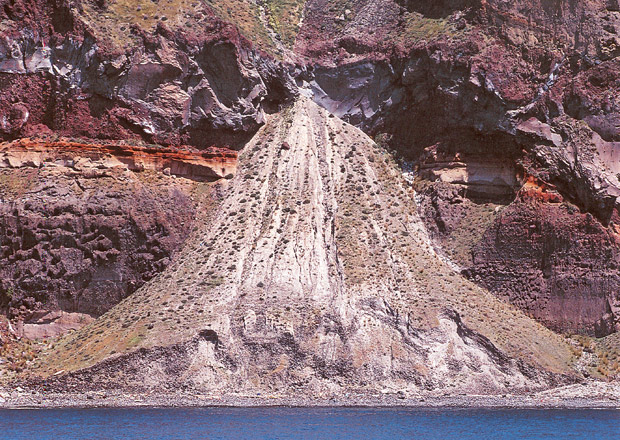The geologist Tom Pfeifer found a charred tree trunk that had stuck in the caldera wall, which had been covered by the pumice of the first phase of the Minoan eruption. This must have been an olive tree on which scientists implemented a modern method of radiometric in order to define the exact date of the eruption. According to the results, it must have occurred in 1630-1600 BC.
Three thousand years later (1650 AD) a tidal wide flooded to the east valley of the Thera, in particular at cape Koloumbo, Perissa and Kamari beaches as well as at Akrotiri. This wave transferred a large amount of the volcanic material that had been laid down during the eruption, from one part of the island to another. What is more, these materials decayed as the centuries went by or even corrupted due to human activities. This made the efforts for the defining of the eruption date even harder.

The beds of rocks at the caldera of Santorini
Fission track methods have managed to define the age of the lower pumice beds of Santorini caldera and at the same time these methods have made a great contribution to the Stratigraphic research. What is more, the ash fans that are erupted during the volcano explosion and create ash layers once having been laid down, offer an effective measurement method as far as the date of the explosion is concerned.
The ash layer spread over the Aegean Sea after the Minoan eruption is a “guide” for archaeologists and geologists who have placed the date of the eruption back to 1645 BC, using radiocarbon measuring methods.
